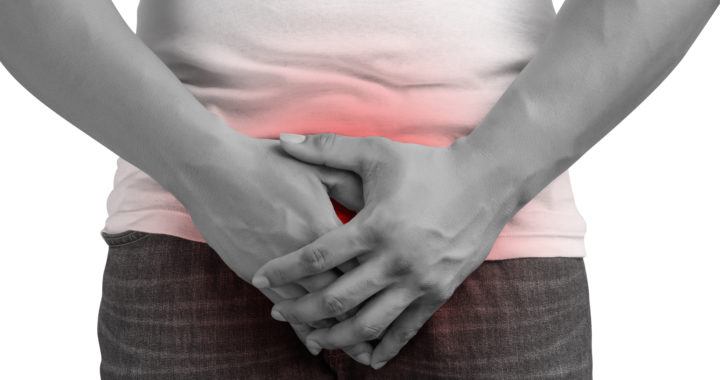Hard-flaccid syndrome is a frustrating and real condition, yet it is not always recognized by medical professionals. A recent review of the current literature on hard-flaccid syndrome was released in 2020 in the journal Basic and Clinical Andrology and gives us some insight into the common symptoms, causes, and treatments available. More research is needed, and recognition of the problem is the first step. You are not alone, and your penis can go back to normal: hard, full, rigid erections and its fully relaxed states!
What is hard-flaccid syndrome?
Hard-flaccid syndrome is defined as a chronic pain syndrome of the penis with a semi-rigid penis in the flaccid state and limited rigidity of the erect penis. Pain, sexual dysfunction, sensory changes of the penis, voiding difficulties, relationship issues, and emotional distress can occur. It is often difficult for those with these symptoms to find a provider to help with them their pain and erection dysfunction, leading to more pain, further sexual, and emotional distress. This condition generally occurs in the 20’s and 30’s, but may occur at any age from puberty onward, often after a traumatic event to the penis.
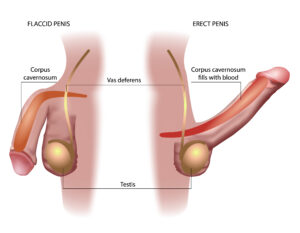
Symptoms
The classic symptom of hard-flaccid syndrome is a painful, semi-rigid penis during the flaccid state of the penis. However, there are several other symptoms of hard-flaccid syndrome. Due to compression of the neurovascular structures in the penis, sensory changes to the penis can occur, such as a feeling of coldness, numbness, decreased sensitivity especially at the glans or tip of the penis. Loss of erections, nighttime erections, spontaneous erections, decreased rigidity of erections, and difficulty sustaining an erection may occur. In addition, excessive physical touch or visual input is needed to achieve an erection, which can lead to overuse of pornography and excessive masturbation, further perpetuating the cycle of pain and dysfunction. Symptoms may be worse with standing due to posterior pelvic tilt position and other postural habits contributing to pelvic floor muscle tension. Urinary issues may occur due to increased muscle tension surrounding the urethra traveling through the penis. Difficulty voiding and slower urine flow are often reported. In addition to the physical symptoms described above, emotional distress, depression, anxiety, decreased libido and sleep problems may also occur. Emotional distress contributes to physical problems and perpetuates the cycle of pain. It is time to break the cycle!
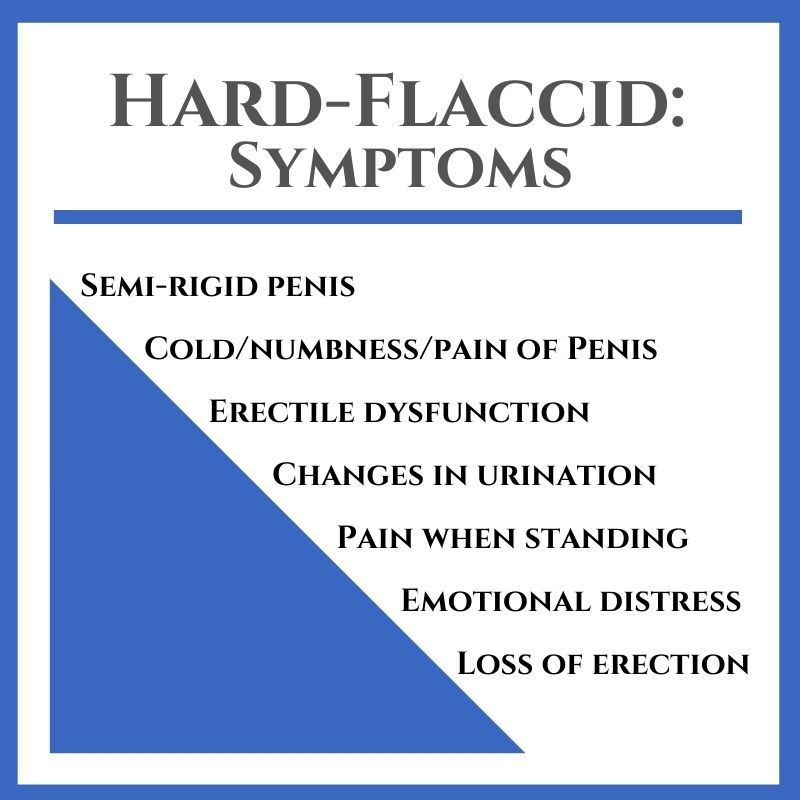
Causes
Hard-flaccid syndrome is generally due to trauma to the penis. This can occur with excessive or rough masturbation, aggressive intercourse (such as hitting the pubic bone of your partner), use of a penis vacuum, jelqing or traction of the penis, and excessive squatting such as while weight lifting. All of the mechanisms of injury impact the neurovascular structures that supply blood, and sensory and motor information to the penis. The neurovascular structures help bring nutrients to the penis, regulate the sensation of the penis, maintain an erection and supply the muscles that make up the penis.
When the muscles, vascular supply, or nerves are stretched or have too much pressure on them, they can be injured. In the case of hard-flaccid, the muscles of the pelvic floor (bulbospongiosus, ischiocavernosus, superficial transverse perineal, levator ani muscles) and the muscles that make up the shaft of the penis ( corpus cavernosum and corpus spongiosum) become too tight. The muscles do not fully relax or contract, limiting blood flow out of the penis, creating the hard-flaccid state of the penis due to the inability of the penis to be fully flaccid or erect. It is important to regain muscle control, improve vascular supply to the penis, and reduced stress to calm the nervous system to restore the normal muscle function of the penis.

Anatomy
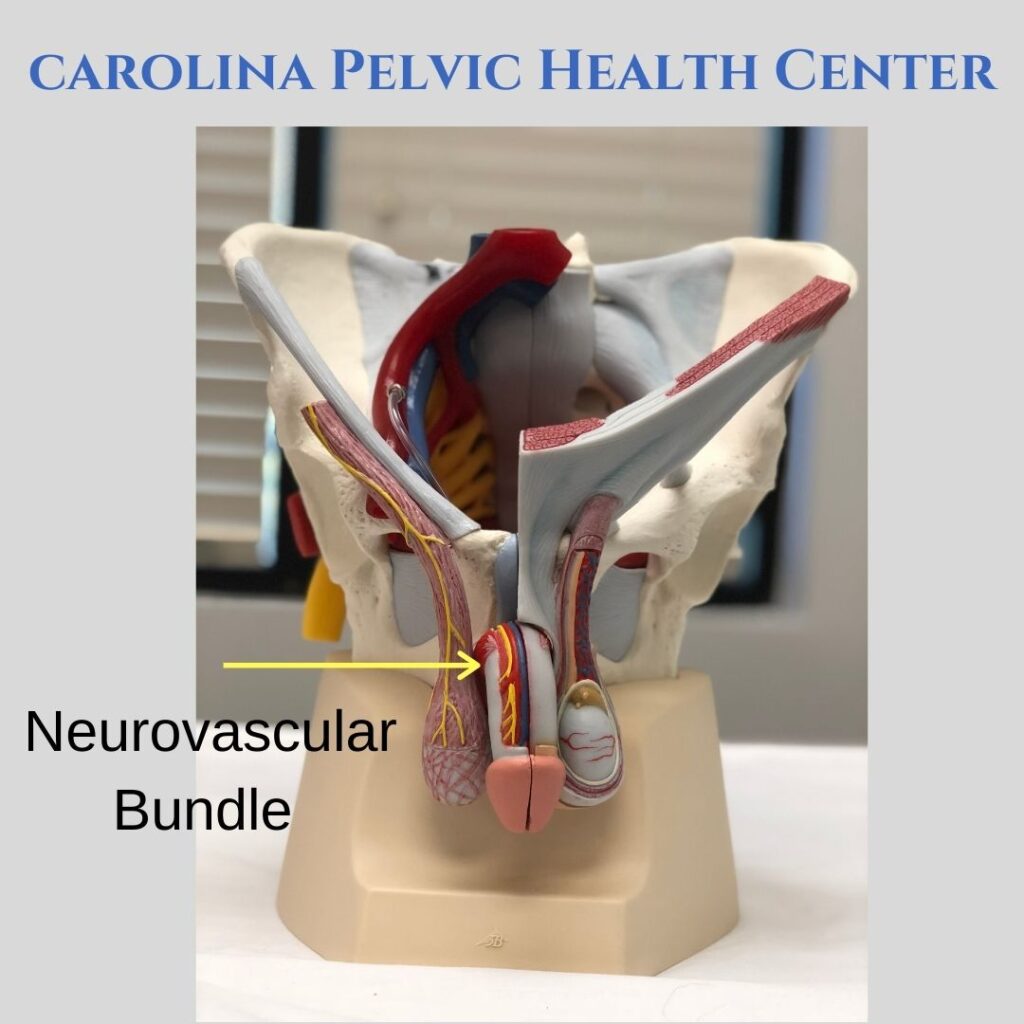
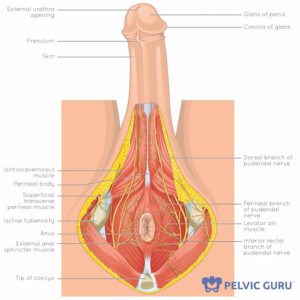
Permission to use copyright image from Pelvic Guru, LLC
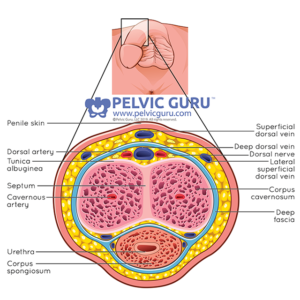
Permission to use copyright image from Pelvic Guru, LLC
Treatment
There is no single treatment for hard-flaccid syndrome and a multi-modal approach is indicated. Due to the complex nature of the muscles, nerves, and blood supply, and the emotional distress caused by pain and dysfunction, calming the nervous system and treating muscle dysfunction has shown to help restore normal penis function. Pelvic floor physical therapy helps those with hard-flaccid symptoms learn how to relax their pelvic floor muscles while also calming the nervous system, reducing nerve sensitivity and reducing anxiety and stress. Breathing, mindfulness and behavioral changes such as implementing good sleep habits, a healthy diet, regular exercise or yoga can also be helpful. Neuromuscular retraining of the pelvic floor muscles with the use of exercise and biofeedback can be done to learn how to fully relax the pelvic floor muscles and then strengthen them to restore length, strength, and coordination of the pelvic floor muscles that are responsible for sexual function. In addition, working with a cognitive-behavioral therapist may reduce symptoms of depression and anxiety that can occur with persistent pain and sexual dysfunction. If you are experiencing hard-flaccid symptoms, there are treatments available to help you! We can teach you how to retrain the muscles of the penis and improve blood flow, calm the nervous system, and restore healthy erections and sexual function.

Give us a call today @ 919.571.9912 to schedule an appointment or learn more about how pelvic floor physical therapy can help you restore your sexual health!
References:
Abdessater M, Kanbar A, Akakpo W, Beley S. Hard flaccid syndrome: state of current knowledge. Basic Clin Androl. 2020;30:7. Published 2020 Jun 4. doi:10.1186/s12610-020-00105-5.

